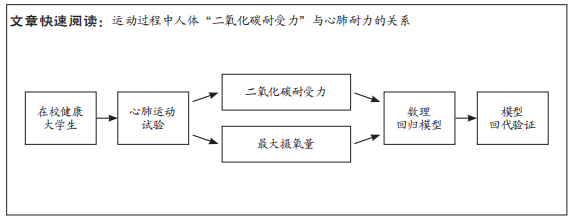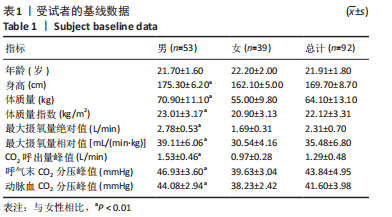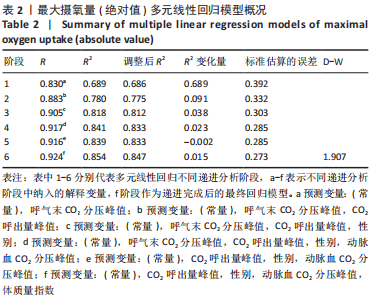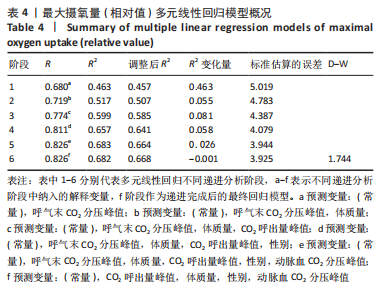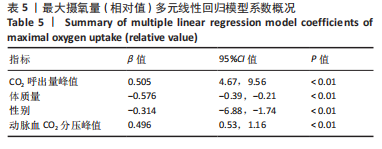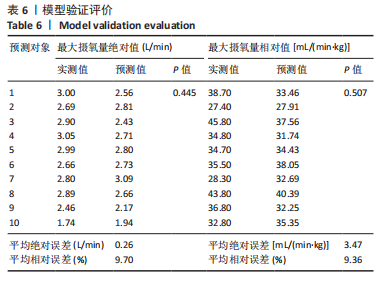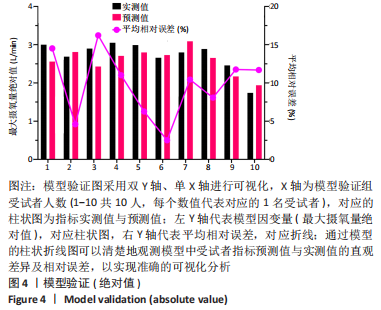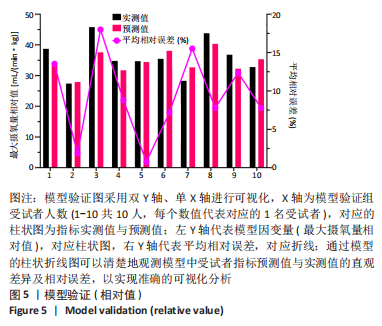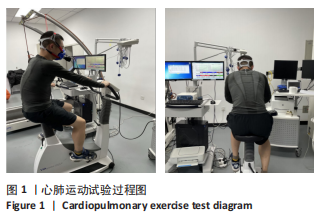[1] WEISS A, ALACK K, KLATT S, et al. Sustained Endurance Training Leads to Metabolomic Adaptation. Metabolites. 2022;12(7):658.
[2] ATS/ACCP Statement on cardiopulmonary exercise testing. Am J Respir Crit Care Med. 2003;167(2):211-277.
[3] 汪军, 周越, 孙君志, 等. 质疑与思考:运动生理学研究的十个问题[J]. 成都体育学院学报,2021,47(1):118-124.
[4] MALTE H, LYKKEBOE G, WANG T. The magnitude of the Bohr effect profoundly influences the shape and position of the blood oxygen equilibrium curve. Comp Biochem Physiol A Mol Integr Physiol. 2021; 254:110880.
[5] MALTE H, LYKKEBOE G. The Bohr/Haldane effect: a model-based uncovering of the full extent of its impact on O2 delivery to and CO2 removal from tissues. J Appl Physiol (1985). 2018;125(3):916-922.
[6] ORTIZ-PRADO E, DUNN JF, VASCONEZ J, et al. Partial pressure of oxygen in the human body: a general review. Am J Blood Res. 2019;9(1):1-14.
[7] POOLE DC, BURNLEY M, VANHATALO A, et al. Critical Power: An Important Fatigue Threshold in Exercise Physiology. Med Sci Sports Exerc. 2016;48(11):2320-2334.
[8] TRAN D. Cardiopulmonary Exercise Testing. Methods Mol Biol. 2018; 1735:285-295.
[9] ROMERO SA, MINSON CT, HALLIWILL JR. The cardiovascular system after exercise. J Appl Physiol (1985). 2017;122(4):925-932.
[10] HARRISON OK, RUSSELL BR, PATTINSON KTS. Perceptual and Ventilatory Responses to Hypercapnia in Athletes and Sedentary Individuals. Front Physiol. 2022;13:820307.
[11] TRAVERS G, KIPPELEN P, TRANGMAR SJ, et al. Physiological Function during Exercise and Environmental Stress in Humans-An Integrative View of Body Systems and Homeostasis. Cells. 2022;11(3):383.
[12] BRUCE CD, VANDEN BERG ER, PFOH JR, et al. Prior oxygenation, but not chemoreflex responsiveness, determines breath-hold duration during voluntary apnea. Physiol Rep. 2021;9(1):e14664.
[13] ELIA A, GENNSER M, HARLOW PS, et al. Physiology, pathophysiology and (mal)adaptations to chronic apnoeic training: a state-of-the-art review. Eur J Appl Physiol. 2021;121(6):1543-1566.
[14] YAMASHIRO SM, KATO T, MATSUMOTO T. Altered chemosensitivity to CO2 during exercise. Physiol Rep. 2021;9(11):e14882.
[15] BOURDAS DI, GELADAS ND. Five repeated maximal efforts of apneas increase the time to exhaustion in subsequent high-intensity exercise. Respir Physiol Neurobiol. 2021;292:103703.
[16] DI GIACOMO A, GHIANI GM, TODDE F, et al. Cardiovascular Responses to Simultaneous Diving and Muscle Metaboreflex Activation. Front Physiol. 2021;12:730983.
[17] SPERLICH B, ZINNER C, PFISTER R, et al. Repeated apnea-induced contraction of the spleen in cyclists does not enhance performance in a subsequent time-trial. Eur J Appl Physiol. 2015;115(1):205-212.
[18] 郝璐, 孙兴国, 宋雅, 等. 不同功率递增速率对正常人心肺运动试验整体功能的影响Ⅰ——峰值运动相关指标及呼吸交换率的变化[J]. 中国应用生理学杂志,2021,37(2):113-119.
[19] 郝璐, 孙兴国, 宋雅, 等. 不同功率递增速率对正常人心肺运动试验整体功能的影响Ⅱ——亚极限运动相关指标的影响[J]. 中国应用生理学杂志,2021,37(2):120-124+134.
[20] 张也, 孙兴国, 刘方, 等. Max试验验证症状限制心肺运动试验为最大极限运动进一步临床研究[J]. 中国应用生理学杂志,2021, 37(2):147-153.
[21] 杨慧君. 基于心功能、血液、体成分指标预测大学生最大摄氧量的研究[D]. 北京:国家体育总局体育科学研究所,2020.
[22] 梁红红. 基于心功能、血液、体成分指标预测大学生无氧阈的研究[D]. 北京:国家体育总局体育科学研究所,2021.
[23] 吴东哲, 高晓嶙, 李闯涛, 等. 根据心肺最佳点构建反向传播神经网络最大摄氧量预测模型[J]. 中国组织工程研究,2023,27(8): 1224-1231.
[24] 李闯涛. 基于动态心肺功能指标预测大学生最大摄氧量的研究[D]. 北京:国家体育总局体育科学研究所,2022.
[25] PANNETON WM, GAN Q. The Mammalian Diving Response: Inroads to Its Neural Control. Front Neurosci. 2020;14:524.
[26] LEMAITRE F, CHOWDHURY T, SCHALLER B. The trigeminocardiac reflex - a comparison with the diving reflex in humans. Arch Med Sci. 2015;11(2):419-426.
[27] KELLY KR, ARRINGTON LJ, BERNARDS JR, et al. Prolonged Extreme Cold Water Diving and the Acute Stress Response During Military Dive Training. Front Physiol. 2022;13:842612.
[28] VITALI L, RAFFI M, PIRAS A. Acute Cardiovascular and Metabolic Effects of Different Warm-Up Protocols on Dynamic Apnea. J Sports Sci Med. 2022;21(2):298-307.
[29] FICO BG, ALHALIMI TA, TANAKA H. Vascular responses to simulated breath-hold diving involving multiple reflexes. Am J Physiol Regul Integr Comp Physiol. 2022;322(3):R153-R160.
[30] MULDER ER, HOLMSTROM PK, SCHAGATAY EK. Effects of dynamic apnea training on diving bradycardia and short distance swimming performance. J Sports Med Phys Fitness. 2022;62(8):1037-1044.
[31] PERNETT F, SCHAGATAY F, VILDEVI C, et al. Spleen Contraction During Sudden Eupneic Hypoxia Elevates Hemoglobin Concentration. Front Physiol. 2021;12:729123.
[32] SUTTERLIN S, SCHROIJEN M, CONSTANTINOU E, et al. Breath holding duration as a measure of distress tolerance: examining its relation to measures of executive control. Front Psychol. 2013;4:483.
[33] PALECZNY B, SEREDYNSKI R, WYCISZKIEWICZ M, et al. Low ventilatory responsiveness to transient hypoxia or breath-holding predicts fast marathon performance in healthy middle-aged and older men. Sci Rep. 2021;11(1):10255.
[34] JAHANIAN H, CHRISTEN T, MOSELEY ME, et al. Measuring vascular reactivity with resting-state blood oxygenation level-dependent (BOLD) signal fluctuations: A potential alternative to the breath-holding challenge? J Cereb Blood Flow Metab. 2017;37(7):2526-2538.
[35] NEDER JA, PHILLIPS DB, MARILLIER M, et al. Clinical Interpretation of Cardiopulmonary Exercise Testing: Current Pitfalls and Limitations. Front Physiol. 2021;12:552000.
[36] NAGAYAMA O, KOIKE A, HIMI T, et al. Clinical significance of a spiral phenomenon in the plot of CO(2) output versus O(2) uptake during exercise in cardiac patients. Am J Cardiol. 2015;115(5):691-696.
[37] KANO H, KOIKE A, HOSHIMOTO-IWAMOTO M, et al. Abnormal end-tidal PO(2) and PCO(2) at the anaerobic threshold correlate well with impaired exercise gas exchange in patients with left ventricular dysfunction. Circ J. 2012;76(1):79-87.
[38] UMEDA A, ISHIZAKA M, IKEDA A, et al. Recent Insights into the Measurement of Carbon Dioxide Concentrations for Clinical Practice in Respiratory Medicine. Sensors (Basel). 2021;21(16):5636.
[39] SMITH KJ, WILDFONG KW, HOILAND RL, et al. Role of CO2 in the cerebral hyperemic response to incremental normoxic and hyperoxic exercise. J Appl Physiol (1985). 2016;120(8):843-854.
[40] VOGLER AJ, RICE AJ, GORE CJ. Validity and reliability of the Cortex MetaMax3B portable metabolic system. J Sports Sci. 2010;28(7):733-742.
[41] OVERSTREET BS, BASSETT DR JR, CROUTER SE, et al. Portable open-circuit spirometry systems. J Sports Med Phys Fitness. 2017;57(3): 227-237.
[42] COMPAGNAT M, MANDIGOUT S, PERROCHON A, et al. Which method should be chosen to estimate the oxygen cost of walking in post-stroke individuals? Gait Posture. 2021;89:217-219.
|
